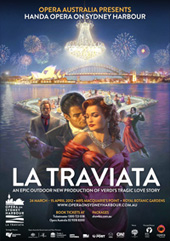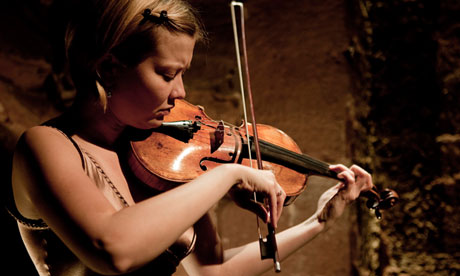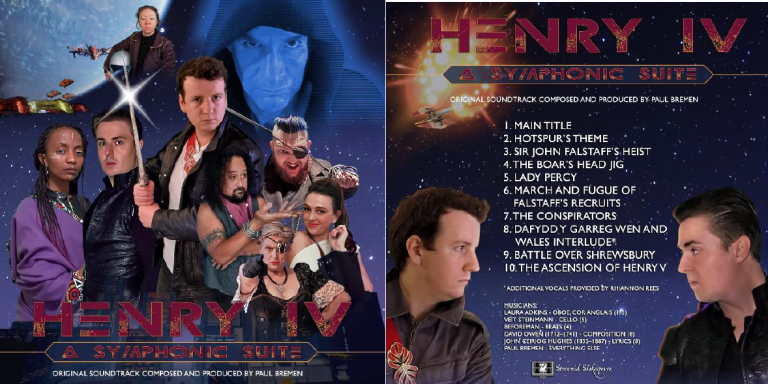Spectrum: creative collaboration realised

London based pianist Zubin Kanga presented his recital Spectrum to an admiring and dedicated audience at the Independent Theatre in North Sydney recently. I was fortunate to speak with Zubin Kanga after the concert to reflect on its content and creation – a process substantially more enlightening than a preview or critique.
Kanga performed 7 works that were composed specifically for him. Most of the composers were present at the recital. The performance was the culmination of a detailed process of consultation and collaboration between the composers and performer which could revolutionise the way commissioned music is written. Kanga says “There’s nothing quite as exciting as starting from scratch, discussing ideas, innovating new techniques, testing out the bits of the piece as it grows, and then finally, creating a bit of history when you perform the world premiere”.
No more cause then for a chasm to divide the composer standing on principles of creativity to compose music that is impossible to perform; nor for performers to complain of music that is ‘unplayable’ . It’s a concept whose time has come.
Kanga breaches another divide in his physical approach to the piano. In his language, it is more than a keyboard instrument – it is percussive and stringed as well as being a medium to be broadened by the use of other materials.
Marcus Whale’s Errata received its world premiere. Using weights on the piano strings and a continual repetition of pitches, the work takes a lesson from ‘mechanical error in an era of industrial decay’. Jane Stanley’s Diptych had Kanga using extended techniques with astonishingly beautiful effect; Rosalind Page’s Being and Time II: Tabula Rasa passed itself off as Baroque style aria until Kanga took to the strings with a drumstick creating a cluster of crushed bass notes; David Young’s Not Music Yet was notated as a watercolour. Also represented were Andrew Harrison, Anthony Moles and one of Kanga’s mentors, British composer Michael Finnissy.
Kanga is pleased. “Overall it went very well. It was a huge project for everyone. There were new pieces and collaborations. Sydney was different to Melbourne acoustically and instrumentally. In Sydney I performed on a Stuart and Sons piano; in Melbourne I had a Steinway and a Yamaha. They’re all excellent instruments, with their own strengths. I enjoy performing on a diverse range of instruments.”
Kanga spoke of the differences between the Stuart and Sons piano featured in his Sydney recital, and a traditional piano. “The Stuart and Sons has extra keys at both ends; also the sound is sustained differently. The Stuart has a different bridge so that the string vibrates up and down in a horizontal plane instead of in an elliptical pattern as in a traditional piano. The elliptical vibration is what gives the Steinway its warmth, whereas the planar vibration is good for the layering of sound in the contemporary repertoire.”
Given that the works were the outcome of a specific creative process between Kanga and the composers he commissioned, I asked him what he would tell another pianist who wanted to perform these works. “I would show them the technical and overall musical priorities and I’d encourage them to find their own approach to the pieces. In the case of the David Young piece (with the painting) I’d encourage them to find a completely original ‘realisation’ of the work, rather than just copying mine.” Piano students are taught little about the internal workings of a piano. Now, there will at least be a foundation body of research and learning that Kanga can teach. ” It may look straight forward but it takes a while to find where you are inside a piano. I had no-one to teach me and had to work a lot things out for myself. It was Rolf (Hind) in London, who taught me the different ways of plucking and scraping the piano strings and playing harmonics.”
Conventional music notation doesn’t (yet) contain symbols to indicate these techniques. Kanga agrees. “There is no standard notation – conventions are starting to develop but they’re not common to all composers. Eventually, a system will evolve that is organised and makes the techniques clear at the outset. ”
For over ten years Kanga has been researching the evolution of ‘new’ music notation. He observes ” The notation can convey great precision, nuance and complexity whilst remaining immediate, fresh and spontaneous. This paradoxical quality lends the performer some great freedoms all within very strict parameters. And as with all music scores, even when the composer hands it over to the performer, it is still not yet music.”
Being at Kanga’s recital, I had the sense that piano music was evolving before my eyes. It was evident though that the instrument had changed little in several centuries. Kanga believes that piano makers will be slow to adapt the piano to features that facilitate extended techniques. ” Different design features would be appealing – such as marking the dampers in different colours, or angling the strings so that they are easier to reach. In Britain there is a piano maker who is building in sliders for each note so that the pitch can be altered during performance.”
There isn’t too much time to bask in the glow of the recital’s success. Soon, Kanga travels back to London for the ‘business end’ of his PhD on creative collaboration at the Royal Academy of Music, writing up a vast amount of material which includes audio and video content.
In October, he will be back in Sydney to perform with Ensemble Offspring in Silva: Natural Music at the Utzon Room. After this is a concert of Latin music with cellist Geoffrey Gartner and at Easter next year, Kanga is performing at the 2013 Metropolis Festival of New Music in Melbourne, curated and directed by British composer, conductor and pianist Thomas Adès.
Zubin Kanga was interviewed by Shamistha de Soysa for SoundsLikeSydney





